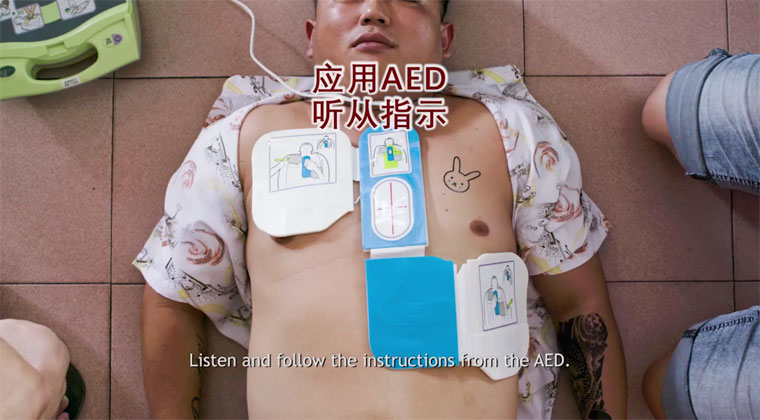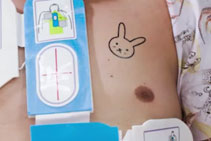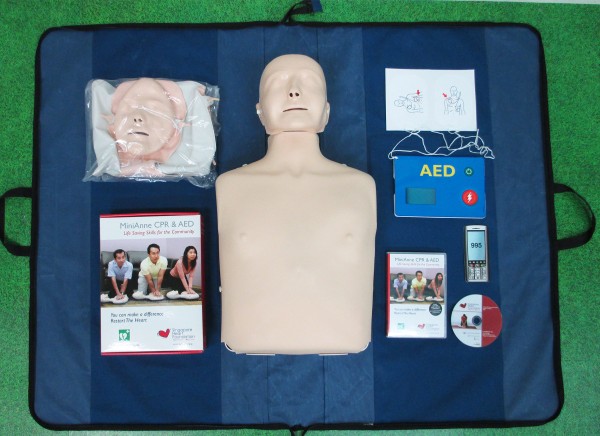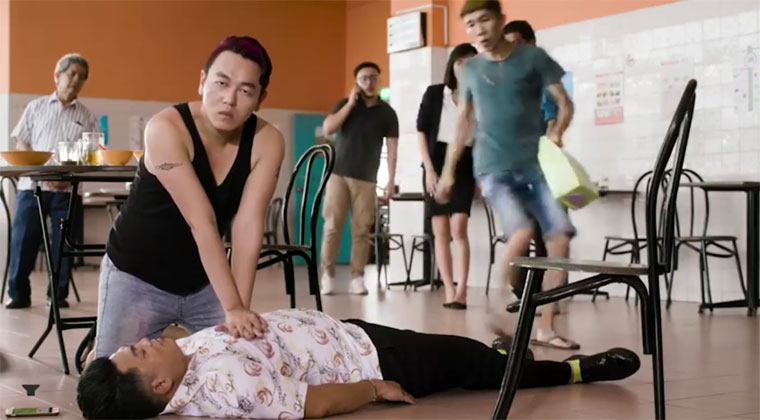The Singapore Heart Foundation (SHF) has pulled out all the stops with this following video to get Singaporeans to be trained in CPR (cardiopulmonary resuscitation) and to know how to use a AED (automated external defibrillator) device:


Statistics indicate that 70 to 80 percent of cardiac arrest cases occur either in the home or at public places.
The victim has an increased chance of survival if the person nearest at hand, often a bystander or a passer-by, is able to provide CPR to the victim promptly.
Once the heart stops beating and blood flow stops, a a cardiac arrest victim will lose consciousness within 15 seconds. Within another 30 to 60 seconds, he will stop breathing, and irreversible damage to his brain cells will follow after several minutes of oxygen deprivation.
For every minute that nothing is done to resuscitate the victim, the chance of survival drops by 7 to 10 percent.
Students these days are already being trained in CPR and use the Mini Anne CPR & AED Kit.
Under the CPR 3A (Anyone, Anytime, Anywhere) Programme (fact sheet here), SHF uses this user-friendly, time-saving device aims to teach the core skills of cardiopulmonary resuscitation to get more people to learn this life-saving skill.

Apparently, this new Mini Anne CPR & AED Kit contains everything that is necessary for a cost-effective, self-directed educational experience that can be completed within 30 minutes, in the comfort of one’s home, work place or school.
The kit takes into consideration Singapore’s National Resuscitation Council guidelines.
Each Mini Anne CPR & AED Kit contains:
A personal, inflatable half-sized CPR manikin
CPR+AED Instructional DVD
CPR reference materials
A dummy AED
A mock mobile phone
Accessories (spare lungs and disinfectant wipes for the manikin)
Through the Mini Anne CPR & AED Kit, SHF hopes to replicate the multiplier effect seen in Denmark and other parts of the world, where participants bring the kit home to train their family members.
To find out more about the four-hour CPR+AED Certification course, go here.
Do note that failure to pull off CPR properly can lead to broken ribs and sternum.
If you like what you read, follow us on Facebook and Twitter to get the latest updates.
If you like what you read, follow us on Facebook, Instagram, Twitter and Telegram to get the latest updates.
